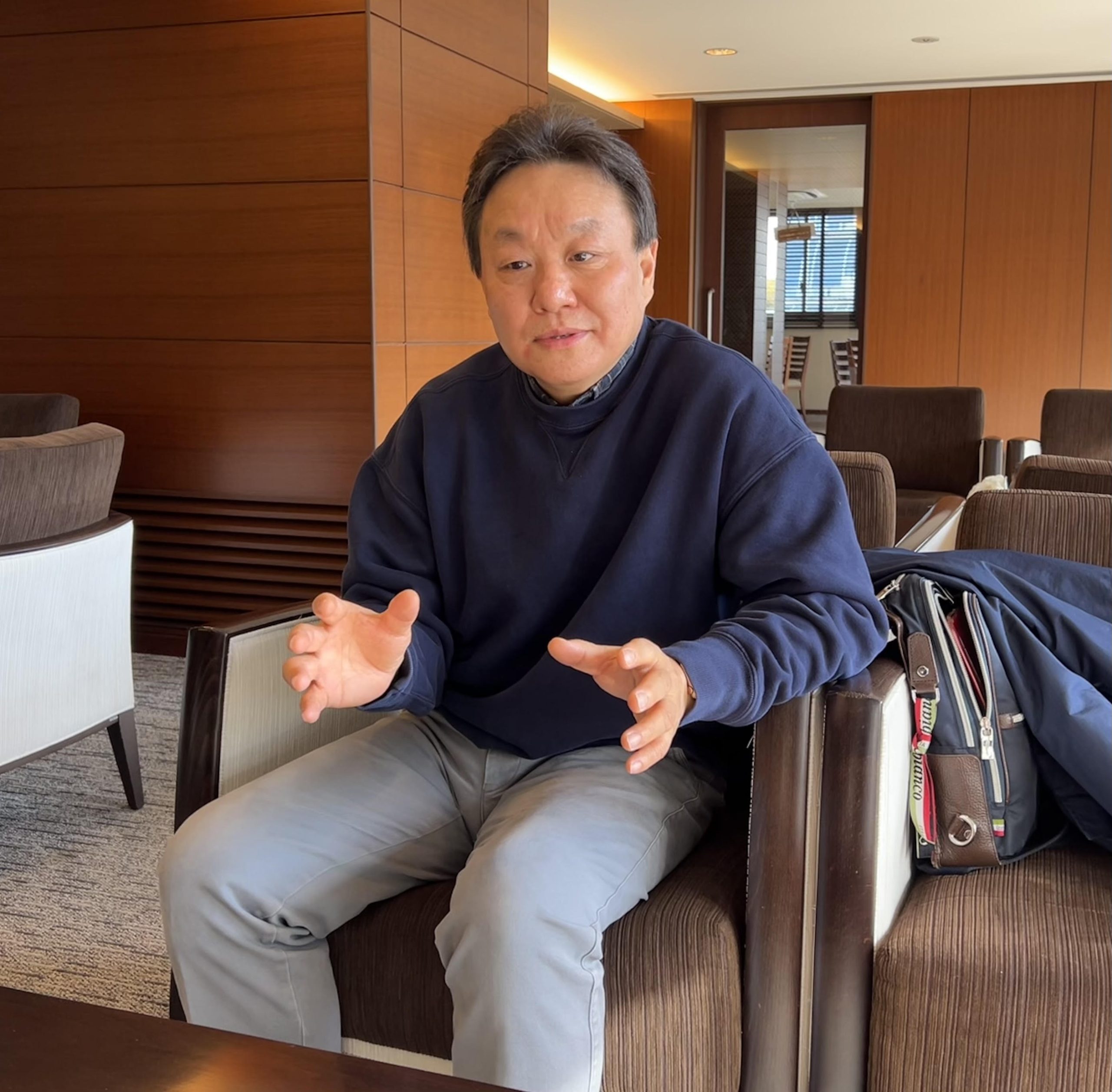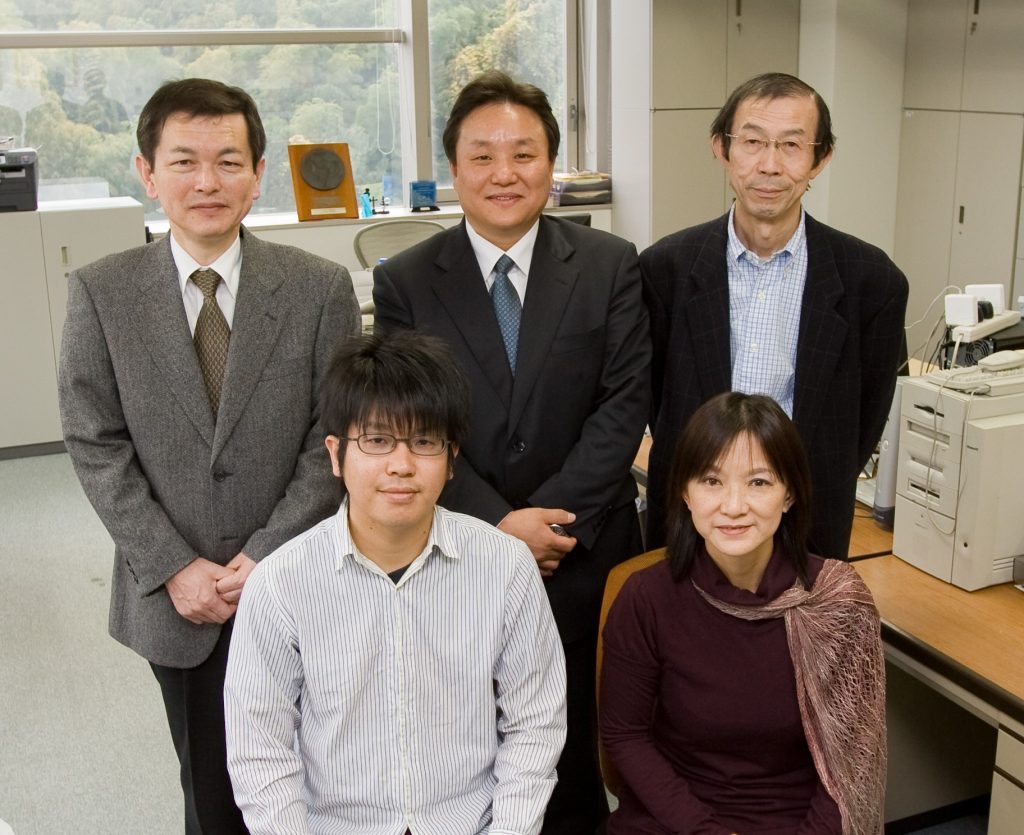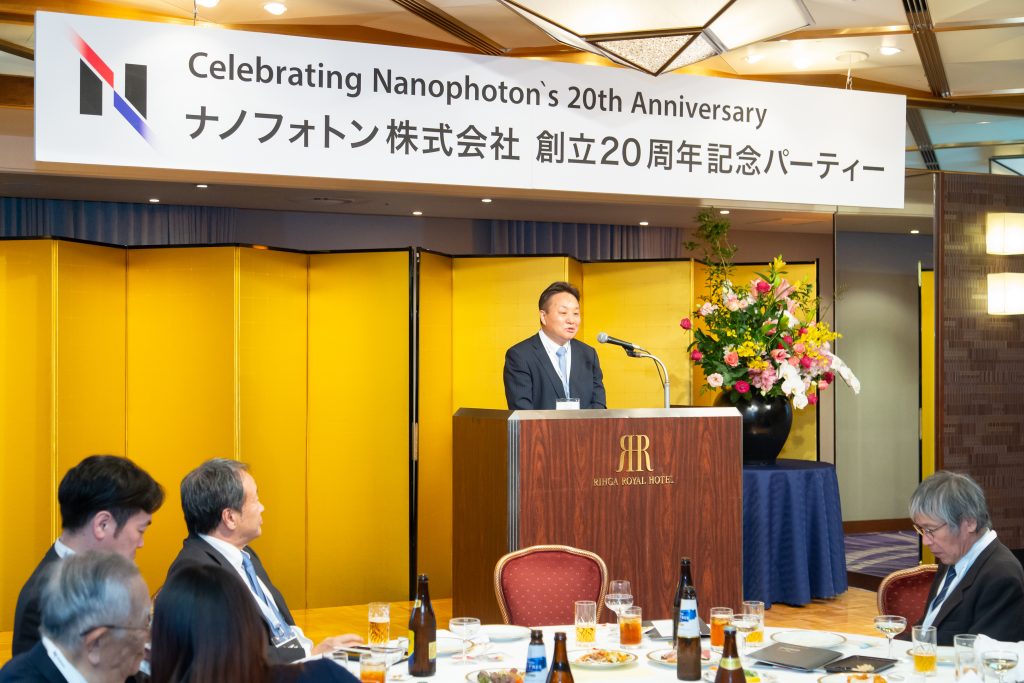Email Magazine
20th anniversary
This is the fourth in a series of interviews with past officers and directors to unravel Nanophoton’s history as part of the 20th anniversary commemorative efforts. This time, we interviewed Mr. Rinto Nakahara, who served as the second president following Mr. Takahiro Ohde, the first president. His many tumultuous episodes are a must-see. This issue is a super (long) epic. (Newsletter editor: Ryo Harada)
Mr. Rinto Nakahara Second President and Representative Director

ーPlease tell us how you became involved with Nanophoton at that time.
Nakahara – – I came to Japan from China to study, and after receiving a doctorate from the University of Tokyo’s Graduate School of Engineering, I spent about three years doing basic research at the National Aerospace Laboratory of Japan (now the Japan Aerospace Exploration Agency, JAXA). After that, I joined Noritsu Co., Ltd. through a relationship with a second-generation professor at the University of Tokyo who was the director of Noritsu’s Basic Research Laboratories. There, I was still young and very frustrated by the fact that I had no decision-making authority even though I knew I was technically great. I felt that what I was doing was meaningless if I could not make decisions on my own, and this time I became more interested in management.
Nakahara – – Then, within the company, a management school was started to train management personnel. It is an MBA-like learning class where lecturers are invited to teach. I saw this as an opportunity and decided to attend the management school for five years.
Just before the end of the school at the end of 2005, there was a program for working people to attend the Graduate School of Management while working at the company. The person in charge of the school recommended the Graduate School of Management, GLOBIS University, where accountants and business managers taught as professors, and I started attending GLOBIS in April 2006 while working at Noritsu (Incidentally, I met Mr. Fujiwara, who is now the executive director of Nanophoton, at GLOBIS.) I attended GLOBIS for two years and continued to go to GLOBIS after graduation.
Just as I was finishing my attendance in July, Mr. Murao, the head of GLOBIS Osaka School, who is close to Mr. Kawata, told me that a company called Nanophoton was looking for a manager. So I actually met with Dr. Kawata and Mr. Shinohara, the auditor, around the end of July. Since I was just back in Osaka for a homecoming trip, I thought it sounded interesting and went to meet them. That was the beginning of my contact with Nanophoton.
ー What made you decide to become the president of Nanophoton?

Nakahara – – In our discussion at that time, we decided that we should reach a conclusion in a week. However, I did not wait a week, but replied three days later, “Please let me do it,” and we met again with Dr. Kawata in Tokyo. There, we talked about many things over drinks in a building above Shinjuku Station. Although I responded that I would do it, it was in one direction, so I think that was the first time that we both formally agreed to do it. Dr. Kawata and I had a heart-to-heart talk about management and technology, such as how to go global and how to spread world-class technology. At that time, Dr. Kawata gave me a batch of materials on the company’s management, so-called board meeting materials and financial statements. When I received them, I felt the weight of “entrusting the company to you”.
Nakahara – – After that, I talked about it with my family, and my wife readily gave me her support. However, I had been working for a publicly traded company, and I was concerned that going to a venture company would be very risky, because I was 45 or 46 years old with a small child and a family to support, and what would I do if the company went under? In fact, I was surprised when I looked at the company data Dr. Kawata gave me. The company was in the red and in serious financial trouble. The technology is amazing, but the company is in the red in terms of management. Not only in the red, but with 30 million yen per device and only 30 million yen in capital, I wondered how they were doing it. I wondered. On the other hand, I had the impression that the company was rather solid there as an intangible asset, since it had technology from the university and Dr. Kawata’s students were also in the company. However, I was concerned about the fact that the company had been in the red for consecutive terms. I had the impression that if the company was in the red for one more term, it would be out of business.
I understand this because I myself came from a research background, but I thought it was important to find a way to gain an advantage in the market.
We were all a group of engineers, and although I myself have a doctoral degree, almost everyone in the company at the time had a doctoral degree. Dr. Kawata and his students were also full of Ph.D.
ーHow was it for you when you took over as president?
Nakahara – – I joined the company on October 1, 2008, right after the Lehman Shock in September. I talked with Mr. Wakamatsu, the director, about various issues, including the fact that if we made a loss for even one fiscal year, the cumulative loss would blow up the company, and that we would have to work hard to raise funds. So, the first thing we did was to cut costs as something we could do immediately. We reviewed travel expenses and other expenses for business trips, and cut back on unnecessary spending. We decided that the only thing that was going around anyway was the electricity meter. Then, we focused our efforts on improving sales efficiency.
The impact of the Lehman Shock on Japan came with a time lag. Our customers, the government-related sales, were not so much affected, but the private sector was very sensitive to the reaction. Our customers are major companies, and they are particularly sensitive to the impact of the Lehman Shock. They said they had projects, but at the time, they did not seem to be moving. They said, “This one looks good, that one looks good,” but they never said yes. I was in a hurry to do something about it.
ーWhat did you do to break out of such a situation?
Nakahara – – Everyone in the company was an engineer, and they all said “Our technology is amazing” and “It’s strange that we can’t sell our products.” Since everyone’s focus was on technology, I felt that it would be difficult to sell products in this way, and I had a sense of crisis. Therefore, I made a clear conscious effort to change our viewpoint. We had a thorough internal discussion, and I told them to think from that perspective: functionality from the market’s point of view, technology from the market’s point of view. It is no good to look at the market from the perspective of technology. If you look at it, you will feel that why can’t we sell even though we are working very hard. In other words, even if the employees are saying that they are great and the performance is excellent, it is no good if there is no need for the product. I told them repeatedly to look at their technology from the market side (the customer’s side). In other words, applications were important to the company, and I created an applications team to explain the technology to them.
If we were unsuccessful in our sales efforts, we would take the product back to the customer and measure it, and say, “This product can measure up to this level, so what do you think of this product?” Thanks to these efforts, sales, which had previously totaled 86 million yen, rose to 120 million yen. With the increase in sales, we managed to turn a profit of 1.5 million yen at the end of the period.
ーWhat else impressed you during your tenure?
Nakahara – – At the time, Dr. Kawata was aware of one problem: he felt that it was no longer possible to develop custom-order products as in the past. He knew that we had to do catalog products after all. In short, at that time, there was no marketing strategy to create such products. We didn’t have many agencies at the time, so we did what we did by asking people to introduce us to people they knew through their acquaintances. Nanophoton’s weakness is that even though the company has a great head on its shoulders and its marketing has been enhanced and its arms have become sturdy, its footing, which is ultimately sales, is weak. Our sales staff was getting older, and we felt that it was not good enough to rely on the skills and sense of the people in charge of sales. If we did not work in an organized manner, if one of us quit, the company would instantly fail. However, we could not hire many salespeople, so we decided that agents were extremely important for the company’s future, and we worked to increase the number of agents.
However, it was quite a challenge. Because the equipment is difficult. The technology was difficult. And the amount of money involved is too large for salespeople to easily sell. If we don’t break through somewhere, the future will become genus. So we went to Nihon Denkei Co., Ltd., which has a nationwide network. I went to see the person in charge to ask him to be our distributor, but he was reluctant to meet with me, so I went back again and again. After steadily making various efforts, I was finally able to meet with him. From there, gradually, even the president came in person and sensed that we were serious. When we explained the product to him, he immediately understood the quality of the product, saying, “This product is good.” Nihon Denkei has a training center within the company, so I told him I would give him a lecture there. “If you are willing to go that far,” he said, “I will introduce you to my boss,” and suddenly he introduced me to the Director and General Manager of the Sales Division. They also introduced me to the head of the Application Center in Tokyo, who gathered dozens of people from all over Japan and gave me a lecture there. We worked steadily and sincerely, and even held an exhibition together. They even introduced me to the chairman and president of the company. Then, they said, “Let’s sign an agency contract,” and the number of distributors increased at once on our website. I think this was the first and largest contract with a nationwide agency. This was the first and I think the biggest one. This led to the expansion of other agency contracts.
Until the very end, when I quit in March 2015, I went around to various places asking for agents.
ーWhat was the catalyst for Nanophoton’s significant growth?
Nakahara – – It was a time when Nanophoton put a lot of effort into marketing as a strategy, since we had not done so strategically before. Specifically, in 2010, we took the plunge and used three booths to exhibit at an analysis exhibition, where we had only one booth at the time. We had a little extra money due to increased sales, so we used the increased sales for marketing. We also put a lot of effort into setting up the booths, making sure they were easy to find and visible from a distance, especially from competitors’ booths. We were so focused on making our booth easy to understand and visible from a distance, especially from our competitors’ booths. We did everything we could, from sales to advertising, and we had 400 to 500 visitors (!) over the three days. We even ran out of flyers. Usually, only 30 to 40 people come to a three-day event, so the number of visitors was an order of magnitude higher than usual. Moreover, dozens of them were our competitors, so I think we had become a concern to other companies as well. They would turn their nametags inside out and hide them, but I usually knew which competitor they were from.
ーNow it’s time to exhibit at Pittcon!
Nakahara – – After the success of the exhibition, we decided to exhibit at Pittcon, the world’s largest exhibition of analytical instruments, held in Chicago in 2009. Pittcon was so large that 5,000 companies exhibited, and we had to drive all over the venue. So, there were two things we were particularly focused on: one was to display the actual equipment. The second was to stand out. For the actual equipment display, we actually brought in the actual equipment. As for how to stand out, we decided to make bright red happi coats. Everyone wore happi coats and wandered around the venue advertising the event.
It was very important that Pittcon went overseas. It was tough in terms of sales, but it was very meaningful in terms of marketing. It is the world’s largest analytical exhibition, so it had the effect of gaining recognition there among people in Japan. Also, when we advertised, we were able to say, “We are exhibiting at Pittcon,” which gave us a status as a venture company.
ーYou changed your nationality from Chinese to Japanese. Why did you change your nationality?
Nakahara – – Yes, I changed my name from Xie Lin to Nakahara Rinto, which is a Japanese name. There were two reasons.
First, I was planning to go to Pittcon, as mentioned above, as the president , to put in a lot of effort to expand the company’s business overseas. If you are a Chinese citizen, you need to obtain a visa from the embassy in advance of your trip to the U.S. (*If you are a Japanese citizen, you can travel visa free if you meet the requirements). Even if you are a permanent resident of Japan, you cannot travel to the U.S. without a visa. Therefore, I had to apply for a visa at the embassy, but it took a great deal of time, and in the end, I could not make it there in time.
This was the moment when I strongly felt that I could not remain a Chinese citizen when going abroad in the future.
Secondly, I felt that under Nanophoton’s business situation at the time, we could not expand our business without borrowing money, and I, as the representative of the corporation, had to be the guarantor.
I wanted to eliminate the weaknesses of the company, and if I was going to do something, I wanted to do it thoroughly, so I changed my nationality for Nanophoton’s sake.
ーWere there any objections from your family?
Nakahara – – Actually, my father and all my relatives had made a genealogy (family tree) of my family, and I am the eldest son and the 56th generation, but when I became a Japanese citizen, I changed my last name to Nakahara, so I was concerned about what would happen to that. I researched and found that it would remain in the genealogy, so there was no problem there. My father, who was also very understanding and internationally-minded due to his university teaching experience, understood my strong desire for Nanophoton and was immediately convinced.
ーFinally, any last words for Nanophoton?
Nakahara – – I think it is great that Dr. Kawata of Nanophoton starts from the design of the product, just like “Apple”, and I feel that he is a visionary. It is not enough to just have technology; it is important to have a clear view of the market. In this sense, I think that as long as Dr. Kawata is around, we will be fine, but I hope that he will continue to place importance on keeping an eye on technology from the market. On top of that, it is important to look at the market and predict what is next. Unlike large companies, venture companies can take on challenges, so I hope that Nanophoton will continue to boldly take on challenges with an eye to the future. For example, right now, “generative AI”and images are a good match, so I would like to see Nanophoton continue to actively challenge new things like that.
ーThank you very much, Rinto Nakahara.
What I felt when I talked with Mr. Nakahara was that he is powerful and has a vision. When he looks back on the time of Nanophoton, (In the original manuscript, it was 50 pages and 20,000 words! ), Mr. Nakahara conveyed his passionate thoughts and feelings at that time to us endlessly. Nanophoton, as a venture company, will continue to have a firm vision and always act with an eye on the market ahead, and will continue to develop better products.

(Translated by DeepL)